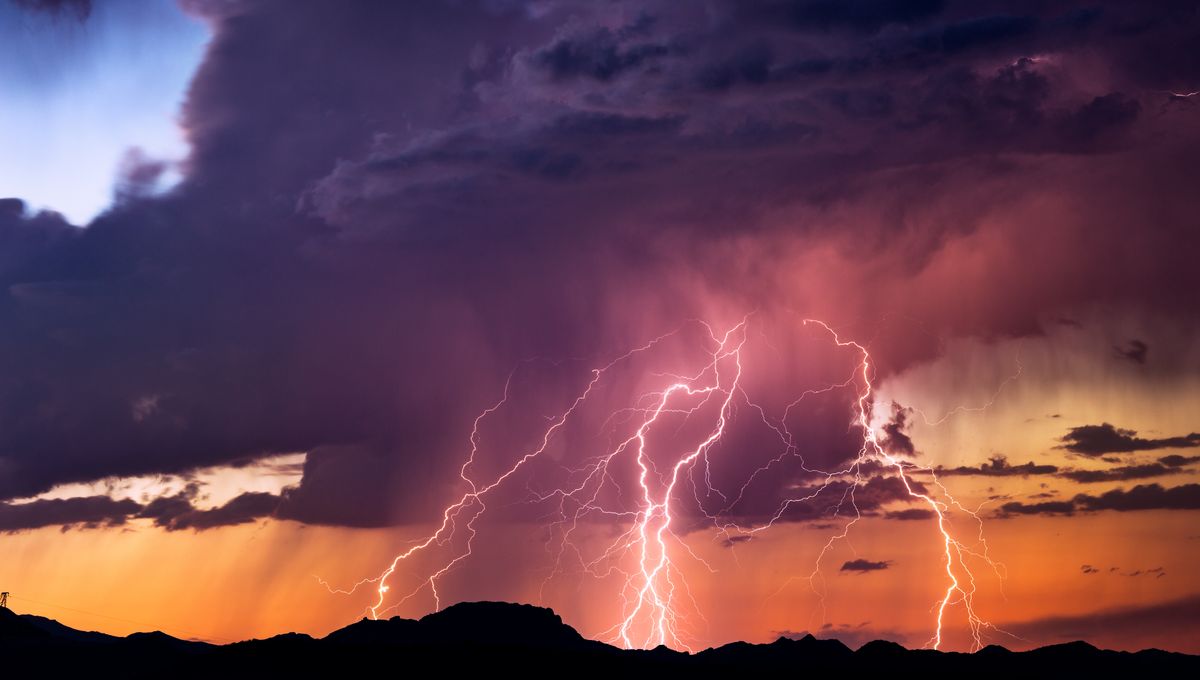
Long before the first Europeans arrived in the Americas, the ancient inhabitants of the Peruvian Andes conducted mysterious rituals upon purpose-built ceremonial platforms that rumbled and roared beneath their feet. Describing one such percussive dancefloor in a new study, archaeologist Kevin Lane from the University of Buenos Aires suggests that the platform was designed to mimic a thunderclap as a means of worshiping the thunder and lightning deities.
Researchers recently discovered the strangely sonorous deck at the site of Viejo Sangayaico, which sits at an altitude of 3,600 meters (11,800 feet). “We have here a specially prepared percussion surface, in essence a type of sprung or ‘sounding’ dancefloor, composed of different types of soil, ash, and camelid guano to create a floor surface able to shock absorb, while also generate a deep acoustic drum-like sound when people stepped, or rather, stomped on it,” explains Lane in his paper.
“In effect, recreating a large drum on the ground surface,” he continues.
Measuring the sounds produced when he and his team “jumped, danced and stomped” on the platform, Lane recorded a volume of between 60 and 80 decibels, which he says is “equivalent to between a loud conversation and a noisy restaurant.”
“Although this sound pressure level was recorded by my team with a limit of two to four people, larger groups would have been able to sustain the higher [decibel] levels for longer,” he says. Based on the size of the dancefloor, Lane calculates that it may have been able to hold up to 26 people at a time.
Digging beneath the surface of the dancefloor, the team identified six loosely bound layers of rocks, soils, and other materials. “These unconsolidated layers created small voids in the stratum which […] made it possible for the ground to produce its percussion-like sound,” writes the author.
Based on the observed structure of these layers, he concludes that “the percussion surface of this lower platform was wholly intentional, thereby creating an arena for music and dance performance with drumming produced by multiple feet dancing or stomping on this surface.”
The site of Viejo Sangayaico dates back to the Late Intermediate Period of 1000 to 1400 CE, and therefore predates the emergence of the Inca Empire. At this time, the area was inhabited by the Chocorvos culture, who are believed to have worshiped a deity that lived in a nearby mountain called Huinchocruz, which overlooks Viejo Sangayaico.
Historical sources indicate that this venerated being may have been named Sasaylla Apo, and while little is known about the nature of this god, shrines and other artifacts associated with deified manifestations of lightning and thunder have been found close to the peak of Huinchocruz.
Based on these discoveries, Lane speculates that Sasaylla Apo may have been connected to these weather events, and that the thunderous dances at Viejo Sangayaico might have been linked to the worship of this force of nature.
Summing up, Lane contends that “the ‘sounding’ dancefloor might have been employed as a means to directly emulate thunder through stomp-dancing such that the sound and accompanying music would equally honor the Chocorvos thunder and lightning deity.”
The study is published in the Journal of Anthropological Archaeology.
Source Link: Pre-Incan Dancefloor That Sounded Like Thunder Was Used For Worshiping Lightning God